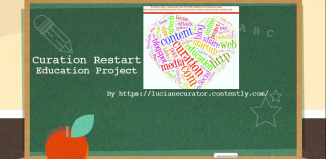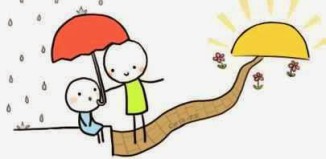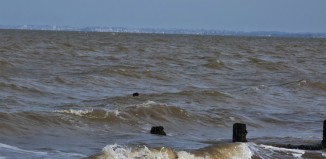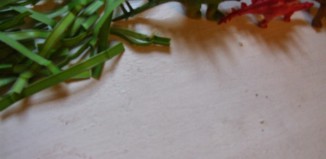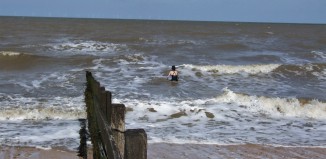Home Syndicated
Syndicated
This is the firehose, all external content syndicated into the site.
The Art of Wisdom and the Psychology of How We Use Categories, Frames, and Stories to Make Sense of the World | Brain Pickings
The Art of Wisdom and the Psychology of How We Use Categories, Frames, and Stories to Make Sense of the World | Brain Pickings: 'via Blog this'
Cellphone by Paul Levinson
In the social sciences as well as media and communication studies there is an increasing interest in everyday technologies, like the cellphone and the webcam. Already in 2004 Paul Levinson, Professor of Communication & Media Studies at Fordham University in NYC, student of Neil Postman, and author of science fiction novels, published his book “Cellphone. The …
Featured Student Work
Students have created some stunning projects for our Reading Literature for Future Teachers class. Recently, they chose a young adult/children’s book author to study and then created multimodal projects representing the texts. Here are a few of my favorites: Morgan Minor filmed her dance group’s representation of being silenced, a …
Brief AERA Redux and Notes on Participatory Learning
I was at the American Education Research Association (AERA) Annual Meeting in Philadelphia this past week, and in addition to meeting a whole slew of amazing scholars, particularly in the field of the Learning Sciences, I was greatly encouraged by the research and work being done with technology in support of student learning. Interest in […]
The Lean MOOC
I recently wrote a post for the DavidsonX blog, describing the benefits of our experience as a relatively lean MOOC team. Where many campuses create a separate structure for experimenting with MOOCs, we did not. As I write this, we are halfway through our first MOOC course run. The work is hard, but highly rewarding, […]
Education and Autism
It's World Autism Awareness Day.Autism and pervasive developmental disorder is a personal part of my life because one of my nephews, a lovely boy named Henry, was diagnosed with autism when he was five. I have to admit when he was a toddler I only saw ...
Mis comunicaciones en el reciente Workshop internacional sobre Creación de MOOC en la Universidad de Málaga
A inicios de marzo se celebró, entre los días 5 y 7, en la facultad de Ciencias de la Educación de la Universidad de Málaga, el III Workshop Internacional sobre Creación de MOOC con anotaciones multimedia. Además de poder asistir, junto a mis compañeros de la Universidad Internacional de Andalucía (UNIA), a las distintas conferencias [...]
Sharing the Load of Blogging In and Out of School
cc licensed (BY-SA) flickr photo by mrkrndvs: http://flickr.com/photos/113562593@N07/13558173444
In Episode 70 of RU Connected, +Lois Smethurst and +Jenny Ashby discussed the place of blogging in school. Both outlined how they had been setting up blogs in the classroom as a great way to collaborate, but also as a way to connect with the wider community, whether this be parents or other schools and students. What I found most interesting though was when the conversation turned from the student to the teacher. Jenny explained about how she had introduced Quadblogging to her staff. I had always heard of Quadblogging been used as a structured way to make links with other classes and other schools, however I had never heard of quadblogging been used as a means for teachers to connect and collaborate.
This all reminded me about an idea that I posed in a post last year, titled 'Sharing the Load of Blogging.' My thought was that in creating a collective school blog, it would ease the stress of time put on staff to maintain their own personal blogs. I envisaged this as a space where those involved within the community could celebrate all that was happening in school. Instead of leaving it up to staff member in the office to chase up people for items for the school newsletter each fortnight, maybe it would be more empowering if teachers actually published something when they had something to publish.
In response to my post, +Jason Markey shared with me a great post from +George Couros titled 'The #Learn365 Project'. In this post, Couros discussed how he had created a site to share all the great work that was happening in Parkland School Division. Modified from the #edu180atl initiative, Couros suggested that the basic premise was that, "every day during the school year, one person within our organization posts a blog on something they learned that day." For many, Couros explained, the collaborative site was a great catalyst for exploring the potential of blogging and led to some teachers creating their personal blogs.
What I didn't realise when I wrote my original post was that, in addition to Couros' own, there were actually quite a few schools already running their own blogs, such as Leyton Learn 365 and tslg1440. However, what this got me wondering was whether there was place to share not only within the school community, but also beyond, a site set up for a wider district or even a state. Maybe such a thing does already exist and so again I am simply being naïve, but a part of me thinks that sharing within the school is only half the battle, we also need a means for sharing beyond the school, with those who may also be going through the same experiences, who may benefit from a different perspective.
In some respect, I am assuming that this is what +George Couros was on about with the #learn365 hashtag, where school communities are able to share in a global manner, however I wondered whether there was a place for a #VicPLN site. A place where teachers could cross post ideas and information that mattered to those in Victoria, Australia. If not a site, then maybe there was a place for something like a Flipboard which contained a great collection of celebrations all in one place. At the very least, wouldn't it be great to have a collection of blogs created teachers all over Victoria celebrating successes, reflecting on failures and just sharing awesome ideas?
If you know of any such blogs, whether it be school based or even region wide, I would love to know. Also, if you are a Victorian teacher interested in adding to list of blogs, please add your blog to the form below:
Loading...
Here is a link to the results.
Top 100 #elearning and #mlearning presentation apps to emaze global audience
Dear friends like you know already from my previous post I will be teacher trainer in a Erasmus Plus Course conceived by me in partenership with Euneos : Curation Social Media Master Class in Semantic Web 3.0 http://educuration.wikispaces.com/Main+Page . I must told you that I discover more than 100 presentation tools, Power Point alternatives and I want to share all these apps you can use to emaze your audience . What app you like , use to share your awesome presentation ? Please leave a comment also if I missed a killer app to emaze a global audience .

Top 70 edapps to unleash the power of your presentation
- Prezi presentation Edtool
- GlogsterEDU presentation edtool
- Slideshare presentation edtool
- presefy presentation edtool
- Docstoc presentation edtool
- present.me presentation edtool
- Blurb presentation edtool
- knovio presentation edtool
- moovly presentation edtool
- empressr presentation edtool
- slidedog presentation edtool
- presentain presentation edtool
- zentation presentation edtool
- Zoho Docs presentation edtool
- flipsnack presentation edtool
- pandadoc presentation edtool
- sliderocket presentation edtool
- Presentate presentation edtool
- Bunkr presentation edtool
- emaze presentation edtool
- Metta — Presentation edtool
- Swipe presentation edtool
- Slidebean Presentation edtool
- HAIKUDECK Presentation edtool
- buncee Presentation edtool
- Presenter Presentation edtool
- projeqt Presentation edtool
- Movenote Presentation edtool
- activetextbook Presentation edtool
- sokratik Ptrsentation edtool
- slid.es Presentation edtool
- SlideTalk Presentation tool
- roojoom Presentation edtool
- Struit.io Presentation edtool
- PowToon Presentation edtool
- Slideshark Presentation edtool
- QwikSlides Presentation edtool
- authorPOINT Presentation edtool
- authorSTREAM Presentation edtool
- Strut.io Presentation edtool
- Reelapp Presentation edtool
- Present.me presentation edtool
- Kingsoft Presentation edtool
- Slid.us Presentation edtool
- Impress Presentation edtool
- Adobe Presenter 9 edtool
- Articulate Presentation edtool
- Everyslide Presentation edtool
- Edynco Presentation edtool
- Dryfork Presentation edtool
- Mikogo Presentation edtool
- Preseria Presentation edtool
- SlideDog Presentation edtool
- Dropmark Presentation edtool
- Swipe Presentation edtool
- Bunkr Presentation edtool
- Silkslides Presentation edtool
- FlipSnackEdu Presentation edtools
- ActiveTextbook Presentation edtool
- Zyyne Presentation tool
- 9SLIDES Presentation edtool
- TotSplash Presentation edtool
- Slide.es Presentation edtool
- Calaméo Presentation edtool
- Vuzit Presentation edtool
- Slideroll Presentation edtool
- SlideBoom Presentation edtool
- Spresent Presentation edtool
- igniteCAST Presentation edtool
- Scribd Presentation edtool
- More Presentation edtools
Top 70 edapps to unleash the power of your presentation
- Prezi presentation Edtool
- GlogsterEDU presentation edtool
- Slideshare presentation edtool
- presefy presentation edtool
- Docstoc presentation edtool
- present.me presentation edtool
- Blurb presentation edtool
- knovio presentation edtool
- moovly presentation edtool
- empressr presentation edtool
- slidedog presentation edtool
- presentain presentation edtool
- zentation presentation edtool
- Zoho Docs presentation edtool
- flipsnack presentation edtool
- pandadoc presentation edtool
- sliderocket presentation edtool
- Presentate presentation edtool
- Bunkr presentation edtool
- emaze presentation edtool
- Metta — Presentation edtool
- Swipe presentation edtool
- Slidebean Presentation edtool
- HAIKUDECK Presentation edtool
- buncee Presentation edtool
- Presenter Presentation edtool
- projeqt Presentation edtool
- Movenote Presentation edtool
- activetextbook Presentation edtool
- sokratik Ptrsentation edtool
- slid.es Presentation edtool
- SlideTalk Presentation tool
- roojoom Presentation edtool
- Struit.io Presentation edtool
- PowToon Presentation edtool
- Slideshark Presentation edtool
- QwikSlides Presentation edtool
- authorPOINT Presentation edtool
- authorSTREAM Presentation edtool
- Strut.io Presentation edtool
- Reelapp Presentation edtool
- Present.me presentation edtool
- Kingsoft Presentation edtool
- Slid.us Presentation edtool
- Impress Presentation edtool
- Adobe Presenter 9 edtool
- Articulate Presentation edtool
- Everyslide Presentation edtool
- Edynco Presentation edtool
- Dryfork Presentation edtool
- Mikogo Presentation edtool
- Preseria Presentation edtool
- SlideDog Presentation edtool
- Dropmark Presentation edtool
- Swipe Presentation edtool
- Bunkr Presentation edtool
- Silkslides Presentation edtool
- FlipSnackEdu Presentation edtools
- ActiveTextbook Presentation edtool
- Zyyne Presentation tool
- 9SLIDES Presentation edtool
- TotSplash Presentation edtool
- Slide.es Presentation edtool
- Calaméo Presentation edtool
- Vuzit Presentation edtool
- Slideroll Presentation edtool
- SlideBoom Presentation edtool
- Spresent Presentation edtool
- igniteCAST Presentation edtool
- Scribd Presentation edtool
- More Presentation edtools
Because in 1st Ipad by Apple was relased on 3 april 2010 and since then this mobile device evolve and now are 500.000 apps in store I will share daily all april mounth here in my blog Top 10 Ipad apps in all of kind of categories, and in last day of april Top 100 iPad apps to take notes in the class :)
View on Flowboard - Presentation software for iPad
Presentations Ipad apps
- Flowboard
- Prezi
- Buncee
- Power Point IPad app
- Keynote
- Power Presenter
- Picture Link
- Haiku Deck
- Slideidea
- 9SLIDES
- Final Argument
- Presentics
- SlideShark
- SlidePocket
- Beamair
- eClicker
- Corkulous
- Deck-one-touch
- SlideRocket
- Joomag
- Vcasmo
- Movenote
- Narrable
- Penxy
- PublishME
- Present Pad
- Jive Present
- Prezent
- Bcontext
- Doceri
Why I Love Teaching
Per my last post, it is obvious it has been a trying week for me at school. Not only have I been having a hard time, but some students have been struggling due to being close to the teacher that passed away since they were in Model UN which was the clu...
MOOCs and Liberal Education: for the autodidact in all of us
John Holbo is discussing MOOCs at Crooked Timber. Part 1, Reason and Persuasion On Coursera – or – Look, Ma, I’m a MOOC; part 2, The Game of Wrong, and Moral Psychology. Here's a comment in part 2:
John Holbo 03.31.14 at 4:10 am
Not to yet further break the butterfly of mdc’s objections on the wheel of what Clay was actually saying, but it’s worth noting that the ideal of liberal arts education as spiritual good in itself is a kind of four-year program of assisted auto-didacticism. One problem with holding up this ideal, to reproach MOOC’s, is that MOOC’s are actually good at assisted auto-didacticism, for those capable of it. (If there’s a problem, it is that MOOC’s are only good for this, not that they are not good at this.) If you are the sort of student who could get the spiritual benefit of going to Harvard, and taking philosophy, you are probably the sort of student who would benefit from a philosophy MOOC. I’m not saying Harvard isn’t better. But the MOOC is a lot cheaper and less rivalrous, as goods go.
#LiveArtHistory W5 Sketchbook 4: short and long writing
The optional assignment this week was to write at length about something that takes very little time to happen - and to write very briefly about something that takes a long time to happen - and to do each three times. I loved this exercise - the short and long writing - and being forced to do each three times. For the long writing about a short thing I chose to do the sneeze - and for my short writing about a long thing I chose to write of birth/life/death. I have included all three versions here - I loved that I had to do it differently each time - and I think I did it.
Lessons for practice: This is definitely an exercise to build into teaching practice - to allow students to just free write and to start to develop a writing self - and to demonstrate in practice that there really is more than one way to answer an essay question.
The writing:
I felt it coming – the tickle, tickling tickled sensation at the back of my nose – down into the deep depths of my whole body. Toes clench, muscles bunch – the diaphragm contracts, roils, bubbles and bursts – the rush – the noise – the expulsion of a burst – an explosion, a ratcheting convulsive bang of AIR thrust through spaces too small to contain the power – the force - the sheer amount of air – from tubule, bronchial, lobe, lung – trachea – nasal passage and OUT through nostril – mouth – nose – body – the SNEEZE!!!
Nasty brutish short.
A light cool breeze caught my ankle – and a sudden shiver ran through and up. Hairs stood erect – puzzled. The feeling became muscular – a dissonance – and a shake – a shiver, a shivering… No! Doubt – resistance - confusion… What? Why? How? And still it came, building force – gathering pace and power – and bursts – erupting – eruption – the body twisting turning resisting fighting – giving in releasing exploding imploding outploding bursting – BANG. The SNEEZE!
Birth Movement Stopped
Wet dripping force and energy – a twisting and turning – a damp a wet a movement an eruption a dissonance and a confusion a roil a boil a convulsive burst of air and noise and resistance and acceptance – an in – and an OUT – oh such an OUT – such a bang a burst an explosion of self of noise of release of anguish – am I ill? Is this a sneeze or the biggest big bang my personal beginning from nothing comes noise and wet and air and… collapse.
Leap Life Lost.
#LiveArtHistory W5 – If we had but world enough and time: Time and Motion
This week we explored the quick and the dead – the performance and the time it takes to produce the performance. There was much emphasis on the role that photography played in stimulating artists in other media to think differently about their own relationships to image/time. This emphasis launched by re-visiting Jeff Walls 1963 ‘Sudden Gust of Wind’ – photomontage, history-painting-type photo-image: of a moment frozen, motion stopped. More challenging perhaps would be Warhol’s ‘Sleep’ five hours and twenty minute film of a friend – asleep. This, easier to engage with than Marcay’s ‘Clock’ a twenty-four hour video installation with each second a movie frame… Or Eleanor Antin’s ‘Nude’, carving her body with a 37-day crash diet – recorded four photos a day…
And suddenly we are drawing connections between stop frame animation and the still life – or as the French term them: nature morte. And we see the parallel in Art History and animation: the impact when what should be still, is quick. Hence Jason’s fighting skeletons and Burton’s ‘Frankenweenie’.
The Interview: This week Chi-Wang discussed the Wooster Group Hamlet:
Three-minute postscript:
Nine minute clip:
The Wooster Group: https://www.youtube.com/user/TheWoosterGroup
And we were asked to recall influential Stop Frame Animation…
From when I was very young – some stop frame and some puppetry – magical – Bill and Ben – this from 1953: https://www.youtube.com/watch?v=o6zNwBTLSWU
Creature Comforts https://www.youtube.com/watch?v=z7ozEy0lQBE– Nick Parks.
Or as they put it:
This week we will explore different ways in which visual artists have engaged with time-based experience, motion and narrative. How do artists evoke ephemeral sensation in fixed images? How did the invention of photographic technologies cause artists to think about time differently? How did the invention of film compel new narrative conventions of telling time-based stories? By slicing reality into finer and finer intervals artists alter worlds into an experience that moves faster than the eye can see (and perhaps even faster than the body can consciously experience). Alternatively, the same technologies challenged artists to reconnect duration to affect by working in “real time.”
Optional Sketchbook Assignment 4: Keeping Time
Track A: Using any media you like, make a work or manipulate an image in such a way as to exhibit the process of making or unmaking as a quality of time or duration:from slow to fast, as a sequence of one thing after another, using repetition, or abrupt transitions or gaps and blanks, giving the effect of a single glance or a long slow stare or …?
Using the same image, repeat the above two more times but differently each time… include 2-3 sentences about your process and what aspect of time or duration you wanted to convey in the work.
Track B: Write a long paragraph about something that happens very quickly (it can be something “real” that you observed or a made-up event).
Then, write a sentence about something that takes a very long time indeed.
Using the same events you chose to describe above, repeat steps #1 and #2 several times, rewriting the events differently each time. If you wish, select one of your texts (either one of your paragraphs or a sentence or both) and post it in this forum … include 2-3 sentences about your process and what aspect of time or duration you wanted to convey in the work.
Further Reading
Jeannene Przyblyski, “Moving Pictures: Photography, Narrative and the Paris Commune of 1871" in Vanessa Schwartz and Leo Charney, eds. Cinema and the Invention of Modern Life (UC Press, 1995)
W10: #rhizo14: Disrupting learning: Creativity in arid landscapes
Creativity and the art of thriving in arid environments (Mar 22 - 30)
And the Trickster spake: After a couple of days required for a creative break, here it is Week 10! In thinking about the topic that I would propose for Rhizo14, the mental image that came up was a desert, and Dave Cormier's evil Japanese plant that grows like crazy. Of course, I wasn't quite sure what to make of this mental image, until I asked the all powerful crowds in the facebook group and it seemed to be that creativity was a topic that many people wanted to tackle. So here we go, Creativity: The Art of Thriving in Arid Environments.
This topic is wide open, it can be about your own personal creativity in education, it can include face to face and online, it can be about any subject - not just art. For instance, how does one creatively move through obstacles in their own organization in order to improve that organization? How do students stay within confining rubrics yes exert their own creativity in their assignments? How do you, as a designer or instructor, act creatively to meet those institutionally mandated goals and objectives for you course while giving your learners something they can sink their teeth into and be engaged through creativity in their learning endeavors?
To bring this to the MOOC realm, xMOOC platforms seem like dry and arid places, all of the creativity has been seemingly sucked from these platforms in favor of video based education. How do you break those system? use them creatively to create engaging xMOOCs? Will they still be xMOOCs if you do something creative with them?
How do YOU see creativity, and how would you respond to a criticism of creativity?
Hey you – don’t touch that – touch this!
We are learning developers (LD) and educationalists teaching mostly F2F – so here’s a response from that perspective rather than from a MOOC one. A big aspect of LD work is to help especially ‘non-traditional’ (NT) students become familiar with and powerful within the exclusionary practices of HE. If we were being Deleuzian (1987, 2005) but critical – we might argue that we were re-territorialising that student to enable them to participate successfully in HE (see arguments about skills – socialization – academic literacies, Lea & Street 1998). More hopefully our new Year-Long Becoming an Educationalist module creates spaces, fissures and cracks for students not traditionally welcome in the academy – spaces for them to re-territorialise as educational nomads.
We wanted our course to both empower students and to critique the reductive nature of education per se. Our fish swim in educational currents composed of the over-riding narratives of assessment, SATs, League Tables, OFSTED and other inspection regimes, moral panics about plagiarism – and the ‘dumbing down’ of education (viz. that great Starkey quote on our University: there are Mickey Mouse students for whom Mickey Mouse degrees are quite appropriate). It is an education system moulded by neo-liberalism and, in the UK, the sense that the market will solve all our problems.
Our module was designed to empower in and of itself – and to act as a tool or lens to critique reductionist education and reductionist curricula. The module includes some direct didactic teaching alongside active and engaging learning: Role playing and simulations; Creative and visual learning strategies, see http://learning.londonmet.ac.uk/epacks/look_make_learn/; Inquiry Based and Problem Based Learning; Reflective learning; Drawing, Poetry and Prose analysis and discussion; Analysis of Educational Policy documents; Research projects; Resource/artefact production; #ds106 and development of a digital self; Peer Mentoring; Contribution to the University’s annual student-facing Get Ahead conference http://learning.londonmet.ac.uk/epacks/get_ahead_conf/
Students are expected to talk, listen, discuss and be with (Jean Luc Nancy) each other; they are expected to attend Music improvisation and Dance workshops – and to design and present their own interactive workshops. They are expected to make notes, read actively and interactively and share their findings – and also to produce collages, blind drawings, conference presentations, real research and digital artefacts. We hope that they join in with energy and enthusiasm to all the different things that they are asked to do – and then to make the learning conscious… especially in their blogs.
Narratives of the self: a space for real writing
There is much research, both anecdotal and more formal, on the fear that academic writing holds for students. In a study at our own University Burn, Burns and Sinfield (2004) found that even successful PG students said:
‘I’m still not sure if my writing is academic. I still don’t know what makes one essay better than another.’
‘I’ve been humiliated in ways that I wouldn’t have put up with anywhere else.’
Arguably the academic essay as a genre exemplifies academic writing per se: non-polemical in form yet inviting certainty of argumentation whilst excluding the personal, the emphatic, the confused, the flippant and the humorous. But these traits can all be valued parts of the individual – needed especially when coping with the implicit threats inherent in transition (Winnicott 1971) into formal academic spaces that traditionally exclude people from certain social, economic and cultural backgrounds. It could therefore be said that writing in the academy acts as a metonym for the academic: implacable, reified, classed. It is the space where our students most feel like ‘a fish out of water’. They are, as with Bowstead’s (2011) student, ‘coming to writing’ passionate, opinionated and eloquent verbally; but ‘we can’t speak as we write’, especially not in an academic environment. This boundary-crossing module is designed to help students enter not only the academic world per se, but also that most tricky academic form - academic writing - including by the quasi-academic writing of the reflective learning log or blog.
Can you blog it?
We presented the reflective log and the Blog in particular to the students as quasi-academic and semi-public space. We wanted to invite ownership: this writing matters – because you have something to say. It is a space to perform one’s self as it becomes academic – and to perform that more wholly than in an academic essay. In both log and Blog you can be playful (Winnicott 1971) – and it is play we need to tackle the threat implicit in transitional spaces – those becoming spaces (Deleuze 1987, 2005) – and it is in play that we are wholly fiercely alive – and fiercely ourselves. We, as with Bowstead (2011) note that in our students all the passion – all that energy – all their power is deemed invalid in the academic essay: it becomes transgressive in and of itself. We hoped that the logs and the Blogs allowed the passion and the play – and that our students would utilize these lines of flight (Deleuze 1987, 2005) to narrate a more powerful self.
Lines of escape/Lines of flight
In stark contrast to the formality of the academic essay, narratives and more personal writing, and multimodal Blogs especially, can constitute the cracks – the boundaries – the borders - the space for disruption, irruptions and eruptions: the place of collision and encounter. Those representations become where space and time collapse – compressed – intensified – because finite – become finite – existing in a fixed placed and time. Their composition emerges from a compressed space, time and setting: meaning and communication become one narrative. And (as Deleuze might argue) this offers an opportunity not to re-trace the compilation of the sign – but a moment – just before it becomes fixed – when all the potential and possibilities still exist. A moment of and for transformation – for recognition of the self … A crack in space and time to re-territorialise educational spaces – to become educational nomads (or as we say in #rhizo14, Knowmads).
Check out Mo’s blog on that A-Maze-ing thing: http://moa1484.wordpress.com/2014/01/28/a-maze-ing/
References (in progress)
Bourdieu
Bowstead, H., 2011. Coming to writing. Journal of Learning Development in Higher Education, [online] Available at:
Brande, D., 1981/1934. Becoming a writer. Los Angeles: J. P. Tarcher.
Burn, Burns and Sinfield (2004) ‘Writing Resistance’ in Discourse Power Resistance Conference, Plymouth University 2004
Burns, T. & Sinfield, S., 2012. Essential study skills: The complete guide to success at university. 3rded. London: Sage.
Deleuze G and Guattari F (1987, 2005) A Thousand Plateaus: Capitalism and Schizophrenia Minneapolis, London: University of Minnesota Press
Elbow, P., 1975. Writing without teachers. New York: OxfordUniversityPress.
Herrmann, N., 1989. The creative brain. Lake Lure, NC: Brain Books.
Freire – mentoring
Freire and/or Giroux – emancipatory education
Kossak, S., 2011. Reaching in, reaching out: Reflections on reciprocal mentoring. Bloomington, IN: Balboa Press.
Lea and Street (1998)
Nancy J-L DATE
#rhizo14 (2014) MOOC: The Community is the Curriculum (Dave Cormier via P2PU https://p2pu.org/en/courses/882/content/3154/ )
Sinfield, Burns and Holley (2003)
Winnicott, D., W., 1971. Playing and reality. London: Tavistock.



